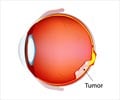Researchers are using 3D models to enhance the understanding and treatment of uveal melanoma, a rare eye cancer.
- 3D models provide a realistic environment for studying uveal melanoma
- They enable effective drug testing and personalized treatment approaches
- This research could lead to innovative therapies and improved patient outcomes
3D models of uveal melanoma offer hope for improved treatments
Go to source).
TOP INSIGHT
Did You Know?
Uveal melanoma is the most common eye cancer in adults, yet treatment options remain limited. #medindia #uvealmelanoma
What Is Uveal Melanoma?
Uveal melanoma is a cancer that originates in the uvea, the middle layer of the eye. Although it is rare, it is the most common type of eye cancer in adults. Treating uveal melanoma can be quite difficult, and patients often have limited options if the cancer spreads beyond the eye. The outlook can be bleak, especially when metastasis occurs, highlighting the urgent need for new treatment strategies.How 3D Models Help in Research of Uveal Melanoma
Conventional cancer research often relies on 2D cell cultures, which provide limited insights into how cancer behaves within the body. In contrast, 3D models of uveal melanoma replicate the tumor's natural environment, offering a more accurate way to study the disease. These models enable scientists to observe tumor growth, interactions with surrounding tissues, and responses to treatments. Researchers are optimistic that this approach will enhance our understanding of the disease and lead to innovative therapies that could significantly improve patient outcomes.Promising Insights for Treatment
By employing 3D models, researchers can more effectively test potential treatments.Drug testing: Scientists can assess how various drugs impact the tumor in a controlled environment, leading to more precise predictions of treatment effectiveness.
Personalized medicine: With 3D models, treatments can be customized for individual patients, enhancing outcomes and minimizing side effects. This tailored approach is especially important for uveal melanoma, where standard treatments may not work for everyone.
This cutting-edge research is a critical step toward offering new hope for patients with this challenging form of cancer.
The development of 3D models represents a promising advance in the fight against uveal melanoma. Although more research is needed, this breakthrough could lead to improved treatments, giving patients and their families renewed hope. As scientists continue to explore the complexities of this disease, the potential for more effective therapies becomes increasingly tangible.
Science has opened a new window to understanding cancer—offering a clearer path toward saving sight and lives.
Reference:
- 3D models of uveal melanoma offer hope for improved treatments - (https://newsnetwork.mayoclinic.org/discussion/3d-models-of-uveal-melanoma-offer-hope-for-improved-treatments/?sf213085815=1)
Source-Medindia
 MEDINDIA
MEDINDIA





 Email
Email










